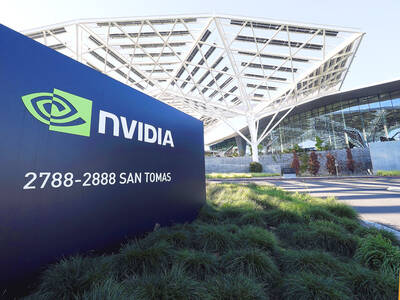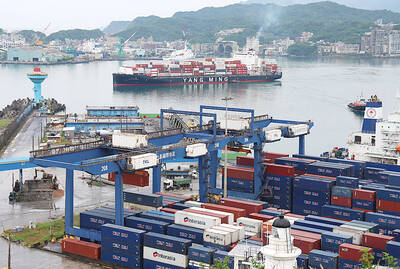Visit a mid-sized store in an Indian city, and you would wonder if it exists to make any money. It might just as well be there to process transactions for half-a-dozen payment apps: PhonePe, Paytm, Google Pay, BharatPe, Amazon Pay and MobiKwik. Add up the merchants who have downloaded the digital services and the figure quickly reaches 80 million.
One-third of India’s 60 million-plus small businesses are using an average of four different platforms, said Raman Khanduja, chief executive officer of Mintoak, a Mumbai-based fintech.
“The neighborhood shopkeepers’ bandwidth is getting sucked into accepting money,” he says. “When do they run their business?”
There are several juggling acts going on, apart from the millions of owners of small businesses reconciling their accounts across the many services that have sprung up as an alternative to cash and plastic.
The payment apps do not make any money out of this activity because they all run on a shared public utility. What they get is data that they can analyze to predict the creditworthiness of the small shops.
It is the banks that ultimately issue loans to these “thin-file” customers, but fintech controls the flow of information — and gets remunerated by the lenders for finding creditworthy merchants.
BANK QUESTION
Why have the banks let fintech get between them and all these potential clients?
Historically, depository institutions in emerging markets such as India did not see much business in democratizing cashless payments. Card readers were costly pieces of hardware and could only be deployed at shops that were well-established. These point-of-sale devices were also dumb: Even when the lenders got data about a store that was swiping a lot of cards issued by them, to advance money to a retailer based on that knowledge required multiple sales calls. It was not worth the trouble then, and makes even less sense now that India’s digital revolution has put plastic in the shade.
Credit and debit cards get swiped in two out of 10 transactions — usually for higher-value purchases and at bigger retailers.
Banks also fell behind in embracing payments on smartphones.
They do not have a tech DNA and the weight of their legacy infrastructure made their own online products clunky.
Fintech, which was far nimbler and more willing to shower generous cash-backs at early adopters, jumped on the opportunity created by India’s six-year-old Unified Payments Interface. Using this highly popular, open-source protocol, mobile apps in India move funds in real time — using phone numbers for person-to-person transfers and QR codes to settle shopping bills.
POPULAR METHOD
Nearly 2 billion such merchant transactions got done in February. The Indian government mandates that all Unified Payments Interface transactions be free of charge.
You would think that the apps, looking for ways to make money from payments, would attack the banks’ deposit-taking franchise, then. They are, actually. BharatPe part-owns a bank and is thus in a position to lure retailers to switch their current accounts. Similarly, Alphabet Inc’s Google Pay, the second most popular consumer wallet in India after Walmart Inc-owned PhonePe, is using its sway to promote fixed deposits.
WHAT’S THE POINT?
If lenders lose control of demand and time deposits, what is even the point of having a banking license?
Lending in a digital world is proving to be equally problematic. Banks are not intuitively geared to handle the unique requirements of small businesses. Suppose the salesperson for Unilever PLC’s local unit shows up at a store and says: “Since I have to meet my quarterly target, you can have another 5 percent discount if you pay upfront.”
Traditional lenders’ internal processes are too slow to clear an immediate loan like that. What is needed are pre-approved credit limits based on the borrower’s digital cash flows and innovative products such as buy-now, pay-later — but for retailers.
This is what banks have been missing out on.
Now they want to reclaim the lost ground, but can they?
Perhaps.
They would have to come in as consolidators, leveraging the trust advantage they still have over fintech, which is hobbled by its own ubiquity. Because there are already so many apps on an average shopkeeper’s phone, each service obtains only a fragment of actual sales.
WHITE-LABEL PLATFORM
“Nobody is getting enough data to offer meaningful financial services,” Khanduja says.
That is why the former Visa Inc executive, together with a couple of his colleagues, came up with the idea of Mintoak, a white-label merchant-payment platform for banks that can accept all digital payments, as well as cash and cards.
It produces a single report, leaving retailers free to run their business.
Mintoak, which works with HDFC Bank Ltd and State Bank of India, two of India’s largest lenders, earns a subscription fee and gets a cut on products that banks sell on the platform.
HDFC Bank owns 5.2 percent of the start-up.
EMERGING MARKETS
India’s success in digital finance has inspired many emerging markets to design payments along similar lines, giving Mintoak a foothold in the Middle East and the prospect of its first client in Africa.
“We want to reconnect banks with SMEs [small and medium-sized enterprises],” Khanduja says.
Payments are not the only way to tap small businesses. A vast chunk of the working capital that retailers need is embedded in the inventory. This credit used to reach them informally via distributors of brands, but it is increasingly being provided by e-commerce platforms such as venture capital-backed Udaan and billionaire Mukesh Ambani’s JioMart app for neighborhood stores.
STANDARD CHARTERED
UK-based Standard Chartered PLC has made an attempt to get into India’s business-to-business e-commerce with the hope of replicating the model in Kenya and other emerging markets.
However, most other banks would rather stick to what they know.
Luckily for them, none of the existing merchant-payment apps still has the revenue heft of a Block Inc — formerly Square Inc — in the US.
Before a dominant player emerges in the fragmented market, India’s banks need to find their way back to the cash counter.
Andy Mukherjee is a Bloomberg Opinion columnist covering industrial companies and financial services.

CHIP RACE: Three years of overbroad export controls drove foreign competitors to pursue their own AI chips, and ‘cost US taxpayers billions of dollars,’ Nvidia said China has figured out the US strategy for allowing it to buy Nvidia Corp’s H200s and is rejecting the artificial intelligence (AI) chip in favor of domestically developed semiconductors, White House AI adviser David Sacks said, citing news reports. US President Donald Trump on Monday said that he would allow shipments of Nvidia’s H200 chips to China, part of an administration effort backed by Sacks to challenge Chinese tech champions such as Huawei Technologies Co (華為) by bringing US competition to their home market. On Friday, Sacks signaled that he was uncertain about whether that approach would work. “They’re rejecting our chips,” Sacks

Taiwan’s exports soared 56 percent year-on-year to an all-time high of US$64.05 billion last month, propelled by surging global demand for artificial intelligence (AI), high-performance computing and cloud service infrastructure, the Ministry of Finance said yesterday. Department of Statistics Director-General Beatrice Tsai (蔡美娜) called the figure an unexpected upside surprise, citing a wave of technology orders from overseas customers alongside the usual year-end shopping season for technology products. Growth is likely to remain strong this month, she said, projecting a 40 percent to 45 percent expansion on an annual basis. The outperformance could prompt the Directorate-General of Budget, Accounting and

NATIONAL SECURITY: Intel’s testing of ACM tools despite US government control ‘highlights egregious gaps in US technology protection policies,’ a former official said Chipmaker Intel Corp has tested chipmaking tools this year from a toolmaker with deep roots in China and two overseas units that were targeted by US sanctions, according to two sources with direct knowledge of the matter. Intel, which fended off calls for its CEO’s resignation from US President Donald Trump in August over his alleged ties to China, got the tools from ACM Research Inc, a Fremont, California-based producer of chipmaking equipment. Two of ACM’s units, based in Shanghai and South Korea, were among a number of firms barred last year from receiving US technology over claims they have

BARRIERS: Gudeng’s chairman said it was unlikely that the US could replicate Taiwan’s science parks in Arizona, given its strict immigration policies and cultural differences Gudeng Precision Industrial Co (家登), which supplies wafer pods to the world’s major semiconductor firms, yesterday said it is in no rush to set up production in the US due to high costs. The company supplies its customers through a warehouse in Arizona jointly operated by TSS Holdings Ltd (德鑫控股), a joint holding of Gudeng and 17 Taiwanese firms in the semiconductor supply chain, including specialty plastic compounds producer Nytex Composites Co (耐特) and automated material handling system supplier Symtek Automation Asia Co (迅得). While the company has long been exploring the feasibility of setting up production in the US to address